What holiday lights look like from space
Yep, it’s that time of year, when American households haul out snarls of fairy lights and set the electricity meter spinning. So pronounced is the festive wattage, you can actually see it from space.
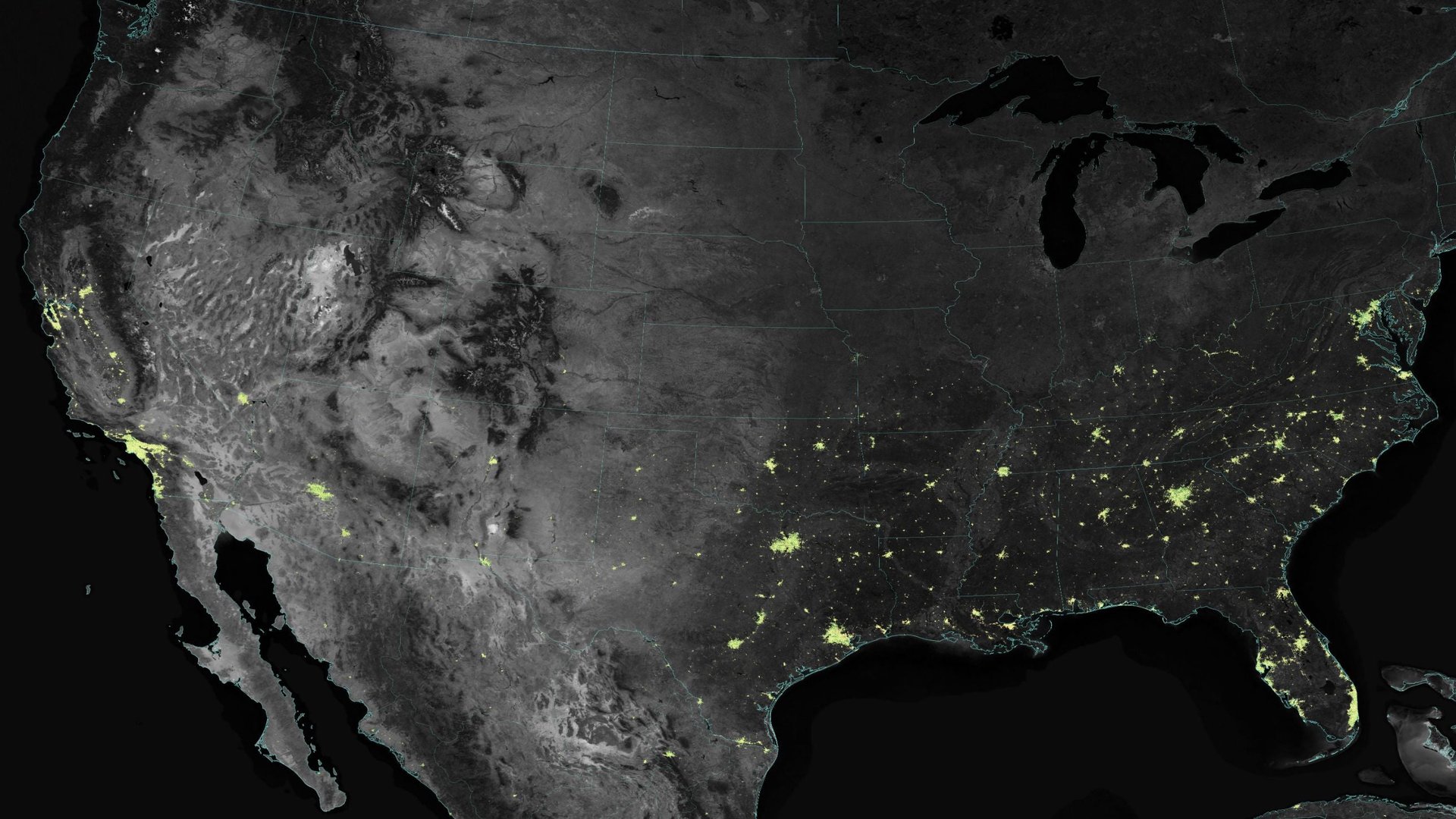

Yep, it’s that time of year, when American households haul out snarls of fairy lights and set the electricity meter spinning. So pronounced is the festive wattage, you can actually see it from space.
The photo above is a composite of nighttime photos taken from the NASA satellite Suomi NPP, comparing nighttime light signals from Dec. 2012 and 2013 with the average light output for the rest of the days from 2012 to 2014. The green shading indicates increased usage in December, yellow shows little change, and red shows areas that actually that cut the lights in December.
According to NASA’s analysis of 70 US cities, America begins glowing brighter the day after Thanksgiving and doesn’t let up until New Year’s Day. (NASA could only analyze parts of the US that aren’t covered in snow, which causes reflections that mess up the analysis.)
As you can see, Texans go all out.
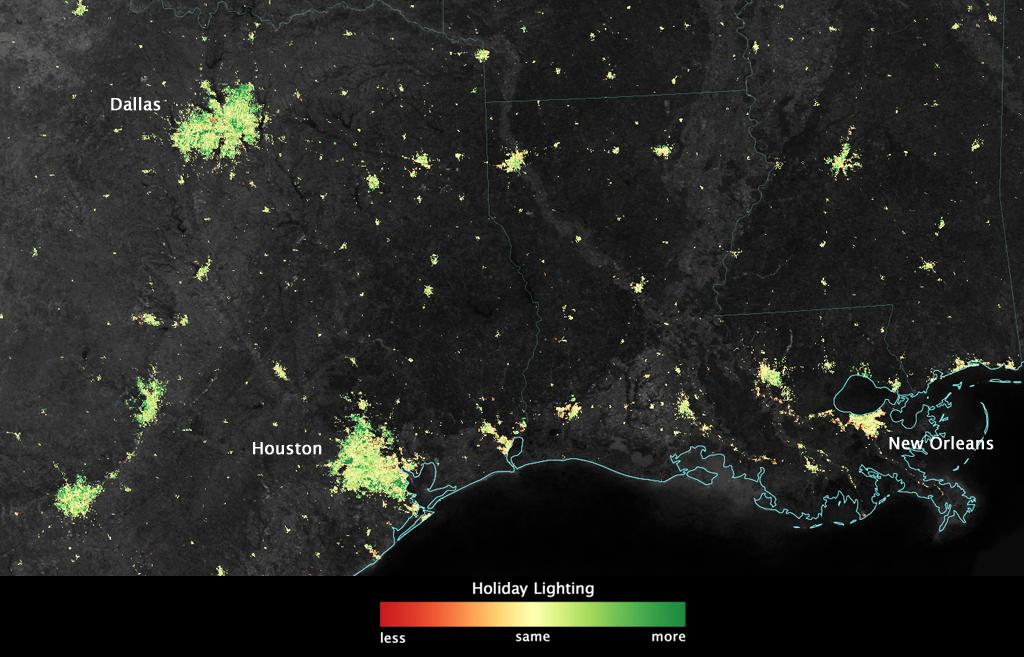
Actually, this isn’t a coincidence. In suburban areas, nighttime lights shine 30-50% brighter during December, compared with the rest of the year. Lights in cities tend only to brighten 20-30%, says NASA. This is probably because suburbs have more yard space and single-family homes, says Eleanor Stokes, a NASA Jenkins graduate fellow who worked on the research. NASA says it’s also because people leave cities for suburban family homes over the holidays.
For instance, compare the Bay Area…
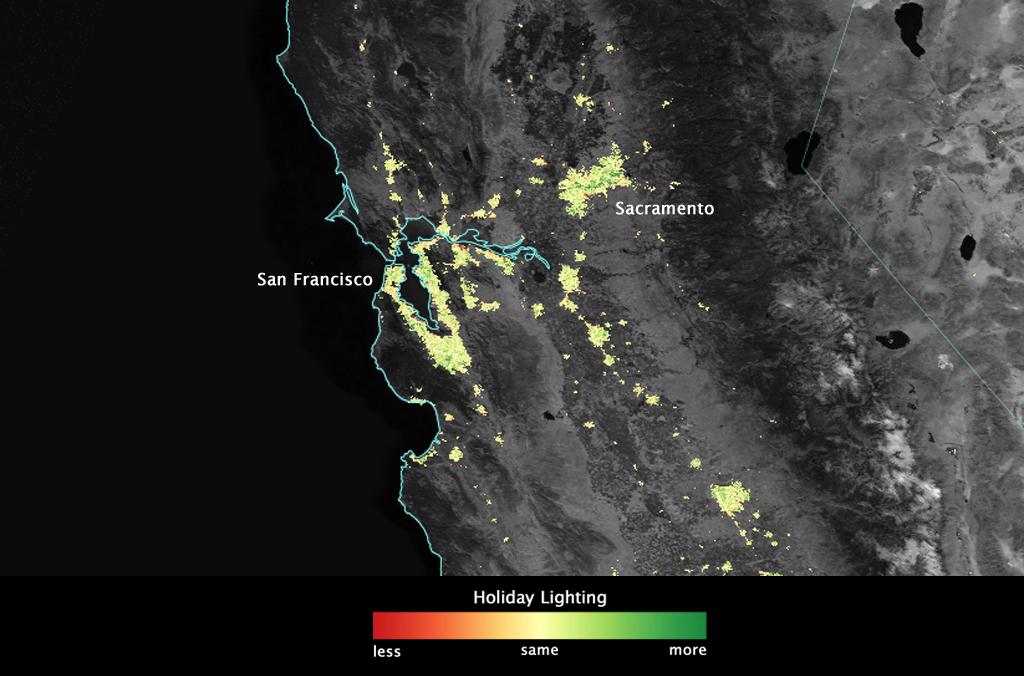
…with Atlanta.
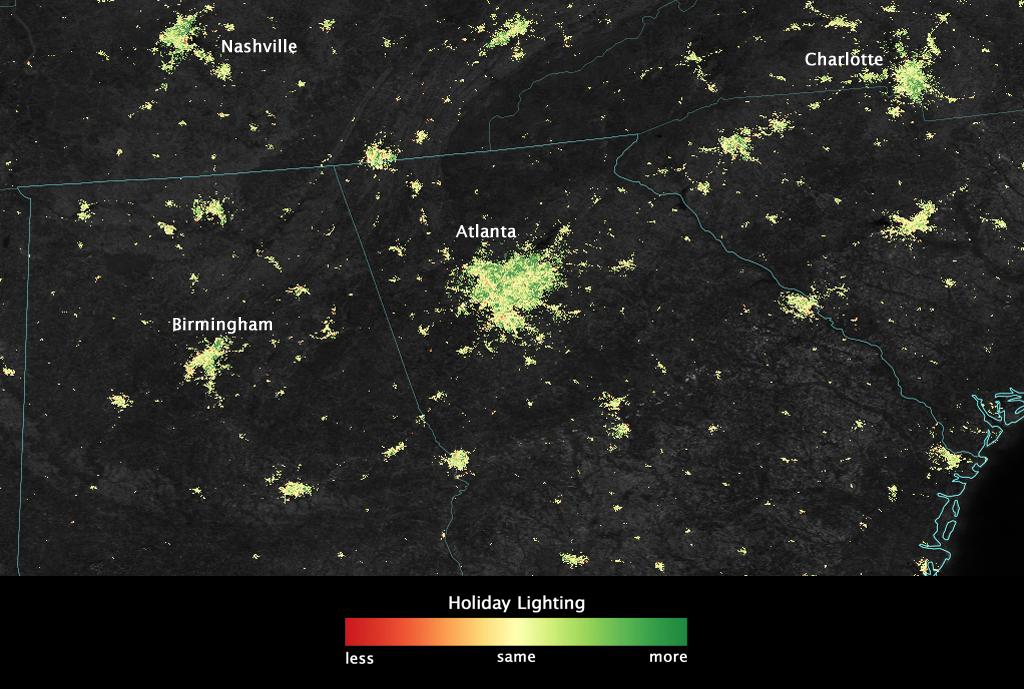
It’s not just the US, though. The Caribbean also gets festive.
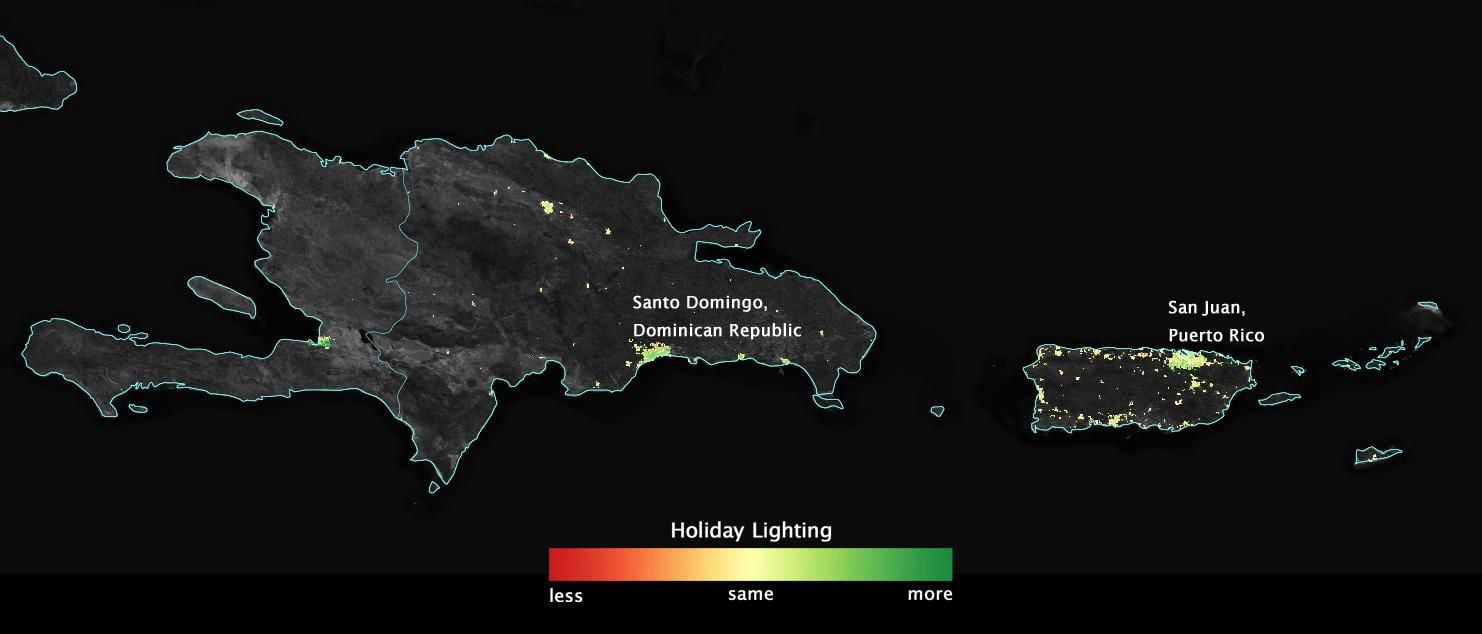
This isn’t the only time of year that Suomi NPP picks up sudden seasonal brightness. During Ramadan, in some cities in the Middle East, nighttime lights shine more than 50% brighter than they do the rest of the year, according to samples from 2012 through 2014.
Cairo sure cranks it up.
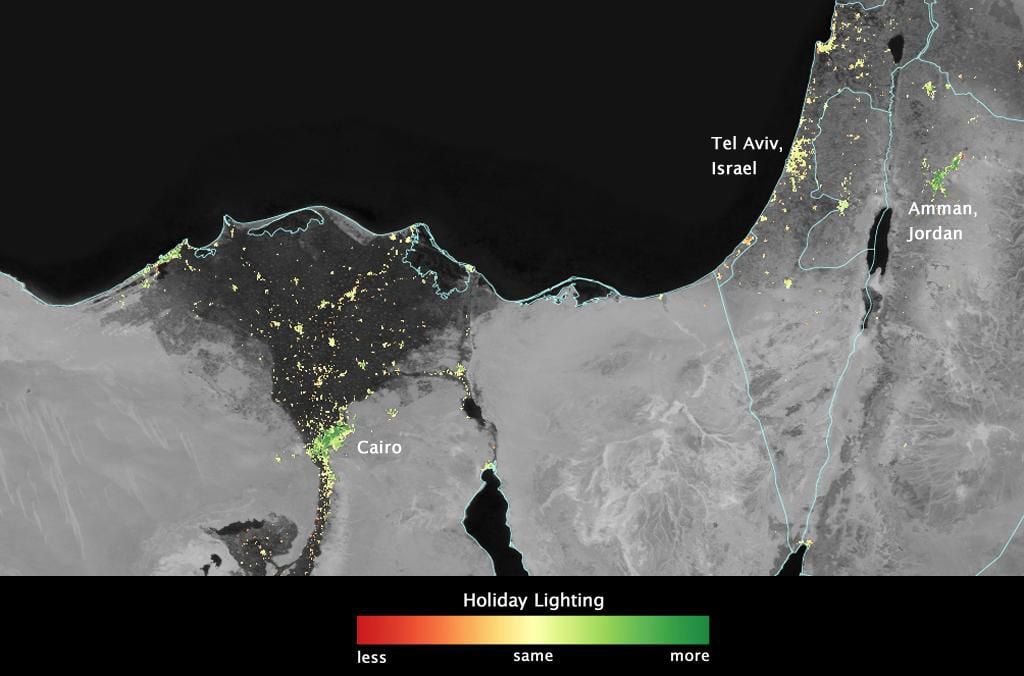
Here’s Saudi Arabia.
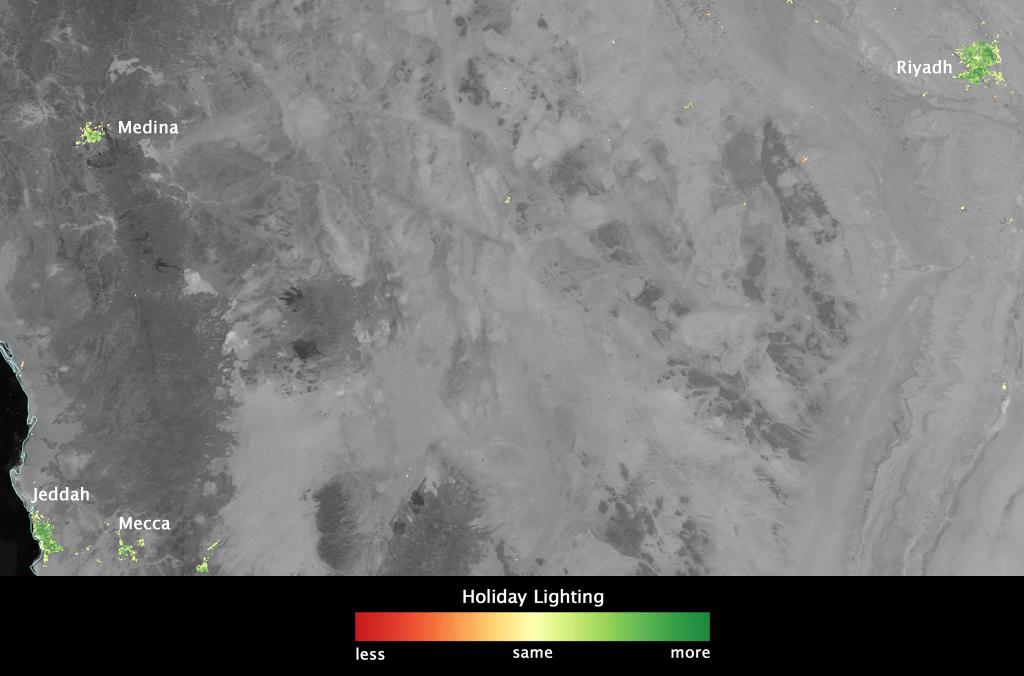
This trend is different from what happens in the US at Christmas, of course—and not just because the lack of light-up reindeer. The change in light intensity during Ramadan reflects more activity at night, when each day’s fast ends, says Miguel Román, a NASA scientist.
NASA has another motive for tracking all this aside from making cool space maps. Seven-tenths of greenhouse gas emissions come from cities. Breaking it down by economic sector, electricity production generates around a third of the US’s total emissions. By looking at light patterns, NASA can observe behavioral norms that are critical to learning how to combat climate change, says Román.
“If we’re going to reduce [carbon] emissions, then we’ll have to do more than just use energy-efficient cars and appliances,” he says.
Like unplugging the three wisemen and the Texas A&M Aggie War Hymn electric extravaganza? Maybe next year.